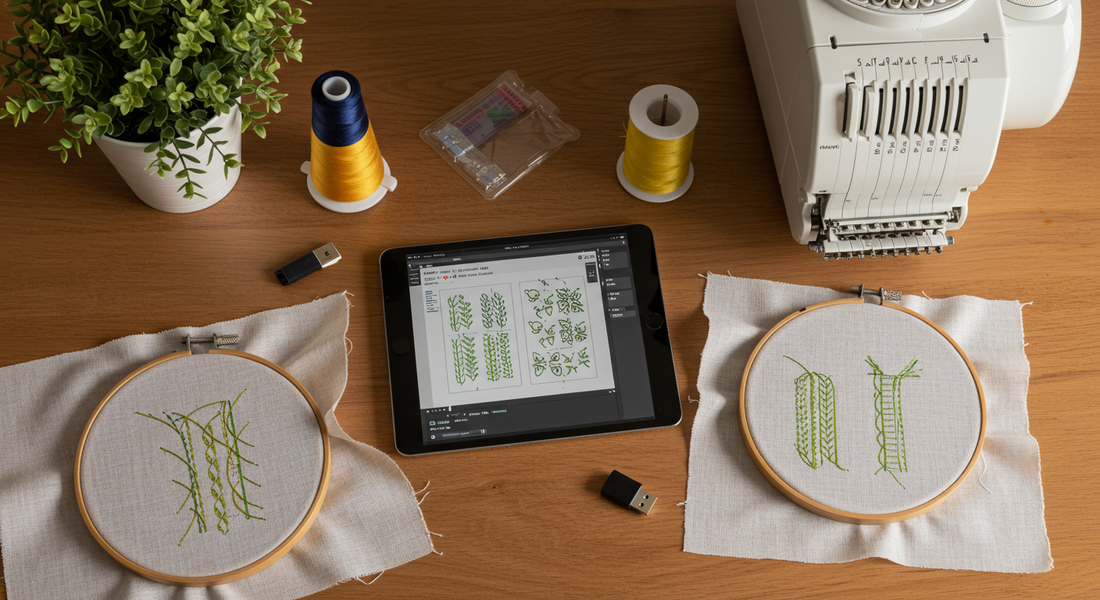
Machine Embroidery: What You Learn Once the Needle Starts Moving
Share
Let’s be honest—machine embroidery looks deceptively simple at first glance. Press a button, and the magic happens, right? But anyone who’s tried it knows: that clean, professional finish only comes with careful planning and knowing how to handle the quirks of your machine, your fabric, and that unpredictable thread. Here’s what I’ve learned (often the hard way) about digitizing, hooping, and dealing with those annoying little issues that pop up mid-stitch.
Digitizing: Not Just Drag-and-Drop
If you’ve ever tried turning a cute sketch into stitches, you’ll know digitizing is both art and logic. Clean artwork helps, yes—but beyond that, it’s about making choices: Will a satin stitch hold this curve? Is that fill area too dense for linen? Sometimes I test a design three times before I get it right. And if you’re skipping the test stitch, let me stop you there—you will regret it.
For tools, I’ve had good experiences with Hatch and Embrilliance, but honestly? Use what you’re comfortable with. It’s not the software, it’s what you do with it.

Hooping: The Make-or-Break Moment
Nobody talks enough about hooping, but it’s everything. If your fabric isn’t snug (not stretched like a trampoline, just… confident), expect puckers. I’ve found that lightly marking the center with a disappearing pen helps a lot, especially when the hoop wants to shift last second.
Magnetic hoops? Total game changer for thick fabrics or designs that span seams. And sometimes I skip the hoop entirely—floating the fabric on adhesive stabilizer can save you from a world of frustration with bulky items like bags or sleeves.

Troubleshooting: When Things (Inevitably) Go Sideways
Thread breaks. Puckering. That moment when your design ends up 5mm off-center. Been there. Here's what I do, or at least try first:
- Thread breaks? Check the needle. Most of the time, it’s bent or blunt. Cheap thread can also be the culprit.
- Skipped stitches? Could be speed. I slow things down if I hear that telltale clack.
- Puckering? Nine times out of ten, it’s the stabilizer. Don’t be stingy with it.
- Design shifted? Re-check your hoop tension and make sure the fabric isn’t moving mid-stitch. (Sometimes I literally tape it down.)
A Few Things I Wish I Knew Earlier
- Replace your needle more often than you think.
- Clean your machine regularly—even if it’s “just a little fuzz.”
- Save your files in multiple formats. You never know when your machine or software decides to be picky.
- Keep a notebook. I jot down what fabric, stabilizer, and thread combo I used for every successful stitch-out. It’s saved me more than once.

Final Thoughts
Machine embroidery is addictive—but it rewards patience. Once you understand how to balance the tech with the tactile, everything changes. You stop fighting with the fabric and start working with it. And that’s when the real fun begins.